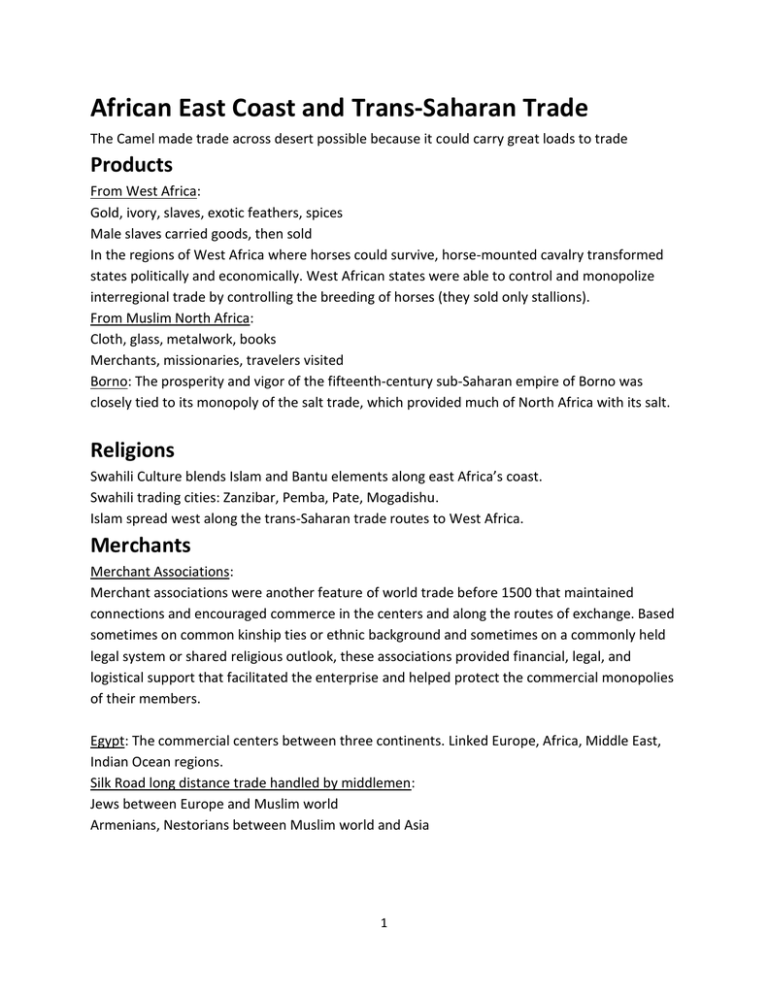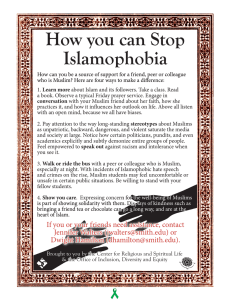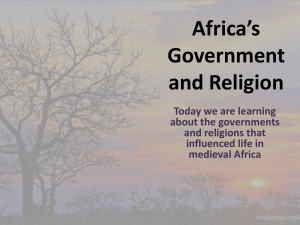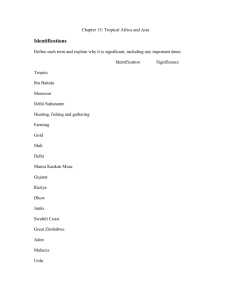African East Coast and Trans-Saharan Trade Products
advertisement

African East Coast and Trans-Saharan Trade The Camel made trade across desert possible because it could carry great loads to trade Products From West Africa: Gold, ivory, slaves, exotic feathers, spices Male slaves carried goods, then sold In the regions of West Africa where horses could survive, horse-mounted cavalry transformed states politically and economically. West African states were able to control and monopolize interregional trade by controlling the breeding of horses (they sold only stallions). From Muslim North Africa: Cloth, glass, metalwork, books Merchants, missionaries, travelers visited Borno: The prosperity and vigor of the fifteenth-century sub-Saharan empire of Borno was closely tied to its monopoly of the salt trade, which provided much of North Africa with its salt. Religions Swahili Culture blends Islam and Bantu elements along east Africa’s coast. Swahili trading cities: Zanzibar, Pemba, Pate, Mogadishu. Islam spread west along the trans-Saharan trade routes to West Africa. Merchants Merchant Associations: Merchant associations were another feature of world trade before 1500 that maintained connections and encouraged commerce in the centers and along the routes of exchange. Based sometimes on common kinship ties or ethnic background and sometimes on a commonly held legal system or shared religious outlook, these associations provided financial, legal, and logistical support that facilitated the enterprise and helped protect the commercial monopolies of their members. Egypt: The commercial centers between three continents. Linked Europe, Africa, Middle East, Indian Ocean regions. Silk Road long distance trade handled by middlemen: Jews between Europe and Muslim world Armenians, Nestorians between Muslim world and Asia 1






